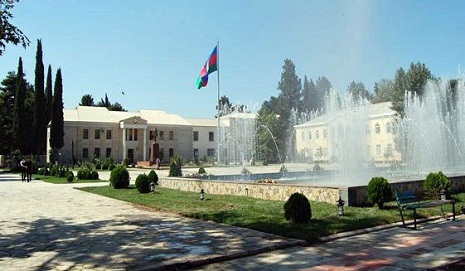Tovuz also is home to one of the main and ancient Alban settlements. The Alban temple, dating to the fifth century, and several other preserved structures once served as shelters for dervishes who led ascetic lifestyles.
The region is also one of the Caspian’s richest agrarian centers, perfect for nature lovers who want to explore rugged mountain lands or Alpine forests teeming with oak, beech, walnut, hornbeam and iron trees as well as wild fruit shrubs. A rare Eldar Shami pine is protected in the Garayazi State Reserve in Jeyranchol. Animals also abound, and it is easy to spot gazelles, roe deers, wolves, foxes, hares, francolins and partridges along the fields and forests of Tovuz.
Keeping the tradition of its Turkish settlers, Tovuz also offers numerous hunting opportunities. With government permits, visitors can hunt hares and various swimming birds skipping across the Kura, Akhindja, Tovuz and Zayam rivers.
For the curious, there is a sour water spring in Catakh village. Because of its sour taste, the water is known by the locals as Turshsu. It contains various chemical minerals that are used for medicinal treatments. In Asrik, there are 36 water springs. Among the most famous are the Findigli, Maral and Shalala. Most of the spring-fed water bodies boast nearby restaurants.
The vast sub-Alpine meadows are the center of Tovuz’s agriculture industry, providing winter and summer pastures for livestock farmers as well as vineyards that gave rise to the region’s booming wine industry. Archaeological finds, including ancient vessels for wine storage, pinpoint the industry’s origins to the seventh century. The industry flourished as German settlers brought new skills and recipes. The area also became famous for producing cognac, which supplied the entire Russian market. Tovuz Baltiya Ltd. is the main producer and exporter of wine products.
The Tovuz region also affords a variety of cuisines, rich in dough meals as well as dishes made with abundant greens and potatoes. Other delicacies include pilaf, barbecue, fried vegetables and the hometown favorite dish known as khingal. Drinks such as buttermilk, dovga, atlama and fresh fruit juices complement the area’s wide selection of wines and cognac.
It is impossible to imagine Tovuz without saz music. Saz is the national musical instrument of Azerbaijan. It is popular in Tovuz. Weddings, parties, local or state-level ceremonies as well as many restaurants are enriched by the musical talents of ashigs, the performers of saz music.
More about:
















































